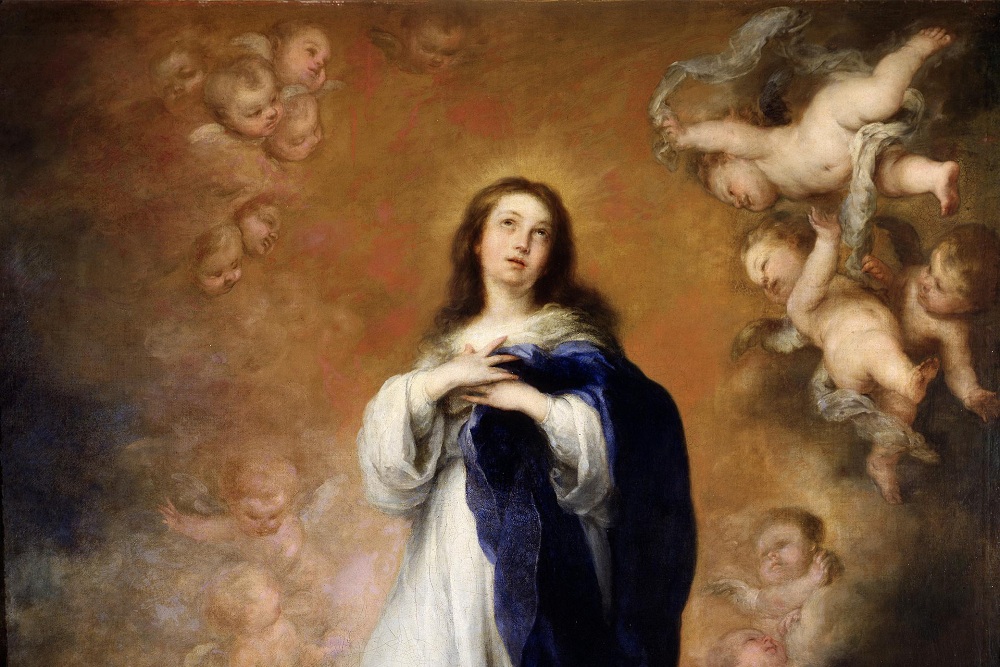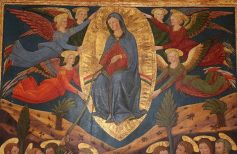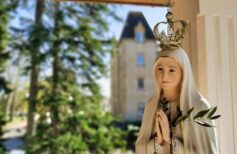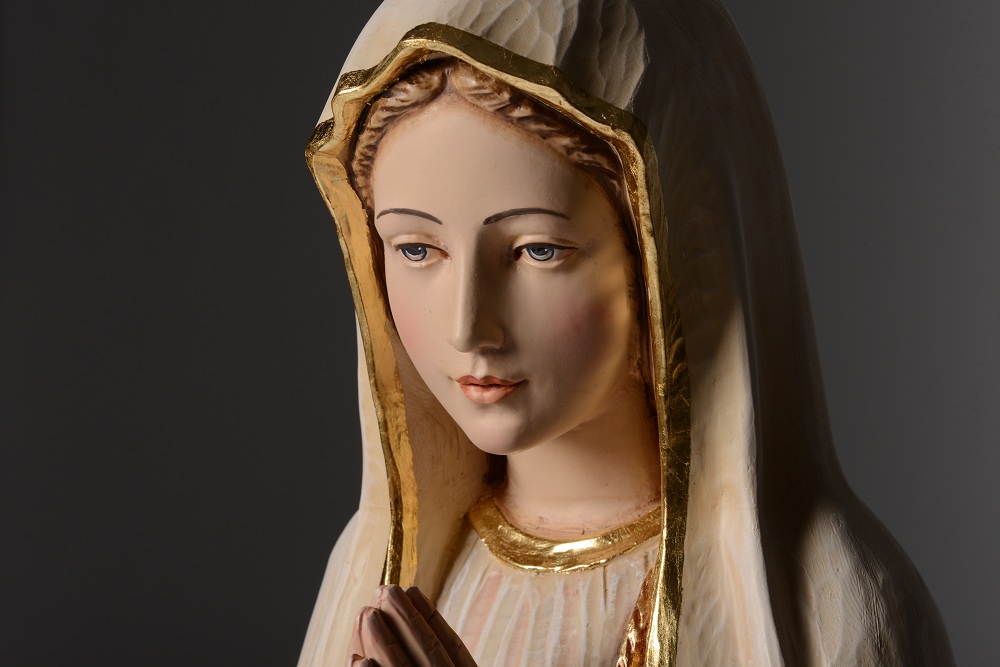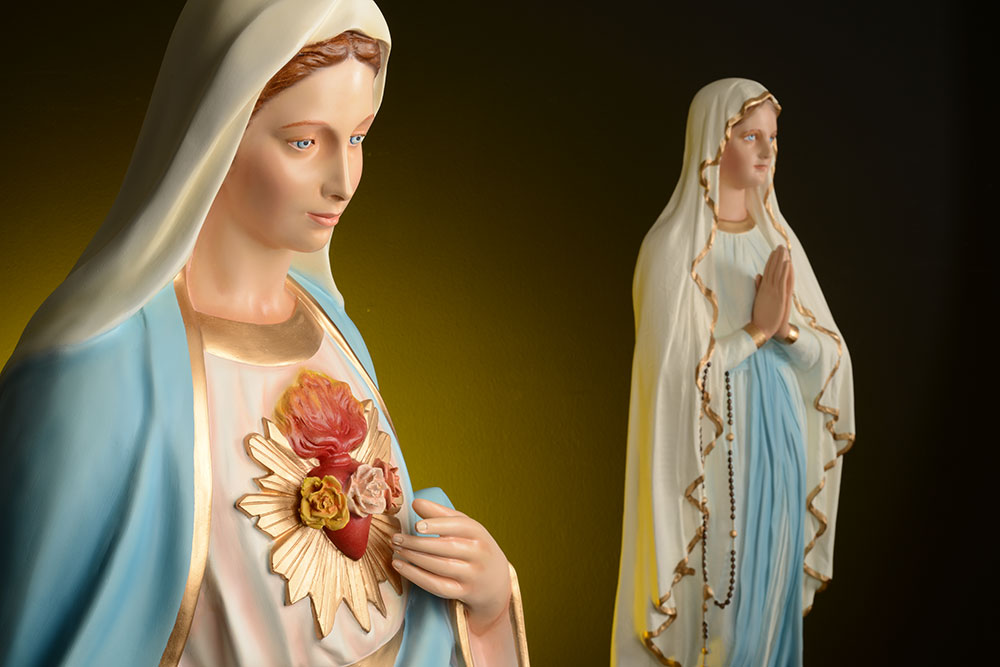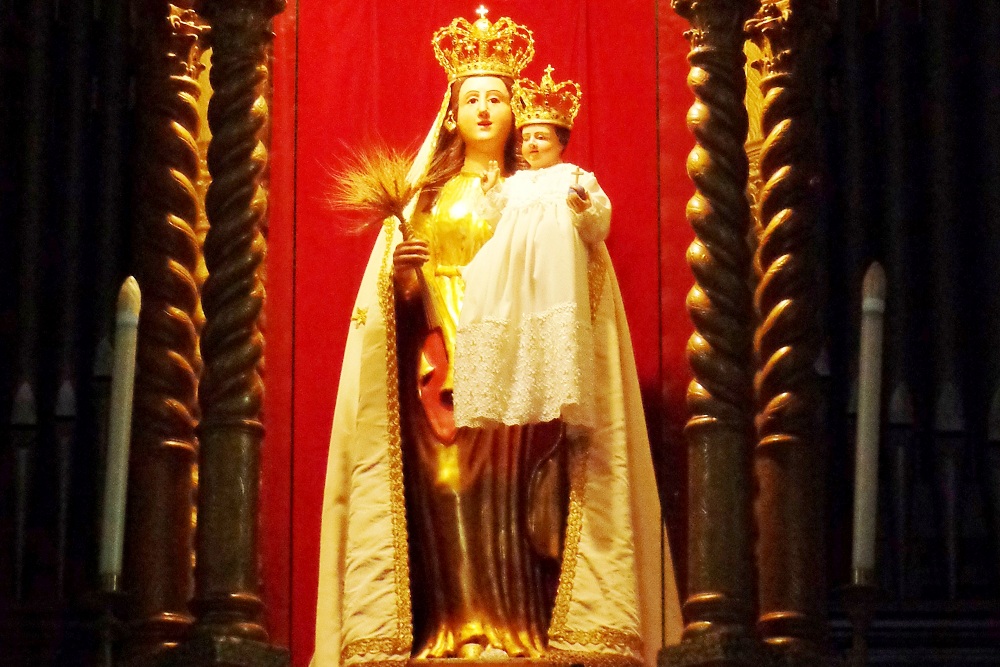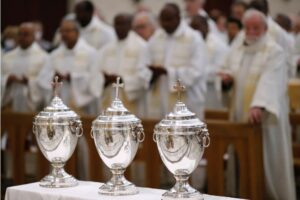Mary, Mother of God, Perpetual Virginity of Mary, Immaculate Conception, Assumption of Mary into Heaven. The four Marian dogmas have been narrating a story of love, salvation, and hope for all mankind for centuries.
Contents [hide]
We often hear about dogmas, those absolute and indispensable truths revealed by God, which every Christian must believe as part of their faith. Although the Greek term dógma or dokein, from the verb δοκέω (dokéō), originally meant “to seem,” it was almost immediately used to denote “decree” in legal language and later “doctrine” in religious contexts. Thus, for the Church, dogma is not an option or a point of view, but an indisputable principle that underpins the faith and belief of an individual and the community of believers to which they belong.
In the early centuries of Christianity, the Greek and later Latin Church Fathers used the term dogma to indicate what is required for Christian faith and practice, and subsequently, the word came to be identified with the Doctrine of the Gospel itself. In the medieval period, it was replaced by the synonym articulus fidei (article of faith). From the Council of Trent (1545-1563) onwards, also in opposition to the assertions of the Protestant Reformers, the term began to be used to indicate a truth of faith, a rule sanctioned by Christ and transmitted by the Apostles, and as such, incontrovertible. From the 18th century, dogma took on its current meaning of doctrinal formula, and with the First Vatican Council (1868) came the precise definition of: “authentic proclamation by the Magisterium of what is contained in the Scriptures.”

The main differences between Catholics and Protestants
The differences between Catholics and Protestants are fundamental to the history of the Christian religion and the birth…
Dogmas have been compiled in the Catechism, and there is a strong link between them and the Magisterium of the Church, which is the custodian and interpreter of them. Through the Magisterium, the Church can also establish new dogmas, which are not true additions but clarifications and interpretations useful for addressing certain circumstances, including historical ones. The difference between the deposit of faith, the revelation of all the truths taught to the Apostles by Jesus, entrusted to the Church to safeguard and transmit, and dogma, the proclamation by the Church of the content of the faith, has also been established.
Thus, today we understand dogmas as revealed truths of faith by God, transmitted by Jesus to the Apostles, and then handed down by the episcopal college, the successor of the apostolic college, under the aegis of the Pope (ordinary Magisterium); or definitions expressed by the Pope with an ex Cathedra statement, not debated in any council, in the name of the principle of papal infallibility (extraordinary Magisterium).
The first dogmas, enunciated in the first seven Ecumenical Councils (between 325 AD and 787 AD), concern truths about God, the Trinity, and Jesus Christ, and require our unconditional assent and total obedience:
– God is one and threefold
– Jesus Christ is the only-begotten Son of God, begotten
– Jesus Christ is true God and true man
Other dogmas were then proclaimed over the centuries, such as the existence of Purgatory (1439-1563), Transubstantiation (1215), and Papal Infallibility (1870), totaling 44 pronouncements collected in 8 thematic grades.
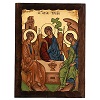
What are Marian Dogmas?
Marian dogmas deserve a separate discussion. For the Catholic Church, Mary of Nazareth is:
– Mother of God (Theotokos)
– Ever Virgin (Aeipárthenos)
– Full of grace, filled with God’s grace (Kecharitoméne) and preserved intact from any stain of original sin
– Assumed into heaven, body and soul (Kóimesis, immersed in the sleep of death)
These definitions of the Virgin translate into the four Marian dogmas recognised by the Church:
– Mary, Mother of God
– Perpetual Virginity of Mary
– Immaculate Conception
– Assumption of the Blessed Virgin Mary
These truths were not invented by the Church over the centuries but were drawn from Sacred Scriptures and thus adhere to the requirements needed for a truth to be considered a dogma.
There are also other Marian truths recognised by the extraordinary Magisterium of the Church, even if not solemnly proclaimed, which see the Madonna endowed by Divine Will with the mission of Co-Redemptrix, Mediatrix, Advocate, playing a fundamental role in the history of salvation. In general, we can say that Marian dogmas are of primary importance in the Christian formation of every believer, as Mary has always represented the ultimate intermediary between God and mankind, and as such, all the gifts of grace given to her represent a promise of hope and salvation for each person.
Here is the explanation of the four Marian dogmas:
Mary, Mother of God
As the mother of Jesus, who is God, according to the dogma of the Trinity, Mary is the Holy Mother of God. This dogma was recognised and proclaimed as early as 431 AD, during the Council of Ephesus, the third ecumenical council, and was the first truth officially recognised by the Church. It represents the first and most significant contact Mary had with God, at the moment when she accepted the mission that the Almighty had prepared for her. Mary, the daughter of God, could not generate her own Creator, but she contributed with her flesh and life to bring Jesus into the world, the human incarnation of the Word, the second Person of the Most Holy Trinity. As is the case with most dogmas, references to the Madonna as the true mother of Jesus, who is also referred to with divine attributes, are found in the Sacred Scriptures. The assertions of Christ’s divinity and Mary’s divine maternity are inevitably consequent. Already in 325 AD, Mary is defined as Theotokos, “Mother of God.”
The recognition of the divine maternity of Mary, the most holy mother of God, was against the heresy of those who, recognising only the humanity of the Word, saw the Madonna as the mother of Christ but not the mother of God. For the Church, the two natures of Jesus, divine and human, are perfect and united in a single person. From the Second Vatican Council onwards, Mary’s maternity becomes central to the concept of the promise of salvation, due to her role not only as a mother but also as a teacher and spiritual support to Jesus throughout His life and mission.
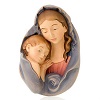
Virginity of Mary
The Council of Constantinople in 553 AD decreed the Perpetual Virginity of Mary. The significance of this dogma is twofold: it represents Mary’s absolute and perpetual bodily integrity, but also the virginity of her soul, united to the Lord in the most sacred and pure of bonds. The Madonna never ceased to be a virgin, even though she conceived a child and gave birth to him in pain, like all women. But all this happened through the power of the Holy Spirit, without physical corruption; indeed, at the moment Mary conceived and gave birth to Jesus, she was so consecrated to God that she was even more pure, even more chaste. Therefore, although a mother, she can embody more than any other woman an ideal of purity and chastity. In traditional iconography, the perpetual virginity of Mary, virginitas ante partum, in partu, and post partum, is represented by three stars adorning her cloak.
Immaculate Conception
The dogma of the Immaculate Conception, celebrated by the Church on December 8, the feast of the Immaculate Conception, establishes that, although conceived and born of mortal parents (Saint Anne and Saint Joachim), the Virgin Mary was born pure, never tainted by original sin, unlike all other men and women. Proclaimed by Pope Pius IX in 1854 with the bull Ineffabilis Deus, this dogma not only signifies the absence of original sin in Mary but also her being full of grace, the only creature conceived, born, and lived in total love of God, in the fullness of His will, to which she entrusted herself completely. God’s great plan of Salvation passes through the Immaculate Conception, as Mary was created from the beginning of time to fulfill her role as the mother of Jesus.

The story of Saint Anne Mother of Mary
On July 26, St. Anne and St. Joachim, the parents of the Virgin Mary, are celebrated…
Assumption of Mary
Unique among the Apostles and all the Saints, and in unity with Her Son Jesus, Mary was taken up to Heaven, body and soul, a messenger of hope for all humanity, pure among the pure. The Assumption of Mary into Heaven is a dogma solemnly proclaimed on 1 November 1950 by Pope Pius XII, who exercised the prerogative of papal infallibility, and is celebrated each year on 15 August, the Feast of the Assumption of Mary into Heaven. In many ways, this dogma represents the fulfilment and culmination of the previous Marian dogmas. Mary ascends to Heaven because she is the Mother of God, because she is the Ever-Virgin, because she is Immaculate. She ascends to Heaven primarily because of her unique and special bond with Jesus, for her role as Co-Redemptrix where He was Redeemer. Her ascent to Heaven celebrates the redemption of humanity, drawn into sin by one woman, Eve, and elevated to the grace of Paradise by another woman, in the triumph over sin and death willed by Christ for all humanity. The dogma of the Immaculate Conception declares Christ’s victory over sin through His mother, while the Assumption signifies His victory over death. It serves as a reminder and a call for all Christians to remember that our earthly experience is merely a passage, that we are destined to survive and be resurrected in soul and body, when the Time comes, just like the Mother of Jesus. And this hope transcends every other mystery.

The Assumption of Mary and the most characteristic celebrations
15 August is not just an occasion for partying and outings. We remember the Assumption of Mary into heaven…


